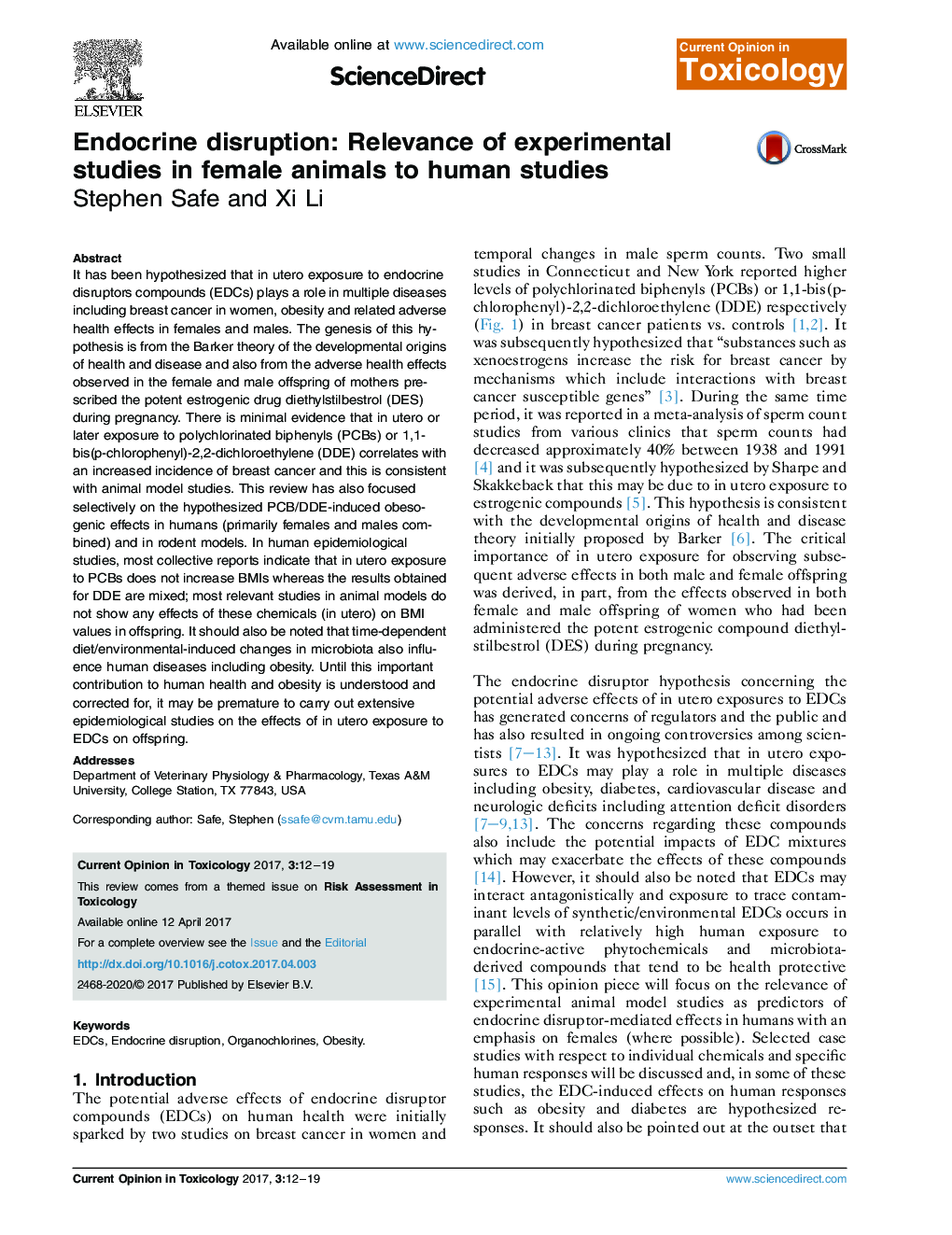| کد مقاله | کد نشریه | سال انتشار | مقاله انگلیسی | نسخه تمام متن |
|---|---|---|---|---|
| 8920255 | 1643350 | 2017 | 8 صفحه PDF | دانلود رایگان |
عنوان انگلیسی مقاله ISI
Endocrine disruption: Relevance of experimental studies in female animals to human studies
ترجمه فارسی عنوان
اختلال غدد درون ریز: اهمیت مطالعات تجربی در حیوانات زن به مطالعات انسانی
دانلود مقاله + سفارش ترجمه
دانلود مقاله ISI انگلیسی
رایگان برای ایرانیان
کلمات کلیدی
موضوعات مرتبط
علوم زیستی و بیوفناوری
بیوشیمی، ژنتیک و زیست شناسی مولکولی
زیست شیمی
چکیده انگلیسی
It has been hypothesized that in utero exposure to endocrine disruptors compounds (EDCs) plays a role in multiple diseases including breast cancer in women, obesity and related adverse health effects in females and males. The genesis of this hypothesis is from the Barker theory of the developmental origins of health and disease and also from the adverse health effects observed in the female and male offspring of mothers prescribed the potent estrogenic drug diethylstilbestrol (DES) during pregnancy. There is minimal evidence that in utero or later exposure to polychlorinated biphenyls (PCBs) or 1,1-bis(p-chlorophenyl)-2,2-dichloroethylene (DDE) correlates with an increased incidence of breast cancer and this is consistent with animal model studies. This review has also focused selectively on the hypothesized PCB/DDE-induced obesogenic effects in humans (primarily females and males combined) and in rodent models. In human epidemiological studies, most collective reports indicate that in utero exposure to PCBs does not increase BMIs whereas the results obtained for DDE are mixed; most relevant studies in animal models do not show any effects of these chemicals (in utero) on BMI values in offspring. It should also be noted that time-dependent diet/environmental-induced changes in microbiota also influence human diseases including obesity. Until this important contribution to human health and obesity is understood and corrected for, it may be premature to carry out extensive epidemiological studies on the effects of in utero exposure to EDCs on offspring.
ناشر
Database: Elsevier - ScienceDirect (ساینس دایرکت)
Journal: Current Opinion in Toxicology - Volume 3, April 2017, Pages 12-19
Journal: Current Opinion in Toxicology - Volume 3, April 2017, Pages 12-19
نویسندگان
Stephen Safe, Xi Li,
